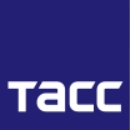News agencies are the wholesalers of news. They have bureaus all across the world where they film, document and record all sorts of events. They are known as the ‘invisible giants’ of news. News agencies sell their content to broadcasts, print organisations and online sites. In this model we can liken these news companies as the retailers, they receive the goods from the wholesalers and then redistribute it to us, the consumers (/customers.) The general ethos of news agencies is to produce unbiased and impartial news which does not rely on ambiguity. Credible news is their currency, and they must be able to sell this to a wide spectrum of distributors each with differing agendas.
News agencies
(Associated Press, Reuters, Agence France-Presse, Getty Images)
Broadcast, Print and Online producers
( BBC, Sky News, Guardian, Heart FM, Daily Mail)
![]()
Audience
The biggest news agencies in the world are Associated Press, Reuters and Agence France-Presse; all of which are global agencies. However each are based out of different countries.
Associated Press – New York, United States
Thomsons Reuter – London, United Kingdom
Agence France-Presse – Paris, France
News agencies grew out of the need for newspapers to have a global reach. Most could not afford to have more than a couple bureaus outside of their headquarters. To resolve this problem global news agencies developed who could be all over the world, where they would collect the news. They then supplied this information to a huge amount of localised newspapers via a wire feed. News companies pay subscriptions for this service. The strong news agencies grew out of the development of the telegraph in the 1850s.
Generally news agencies are commercially run. However in some more authoritarian countries, the news agencies are state run. This leads to concerns of the news being more akin to propaganda rather than impartial news. A few examples of these would be
Xinhua (China)
ITAR-TASS (Russia)






Leave a comment